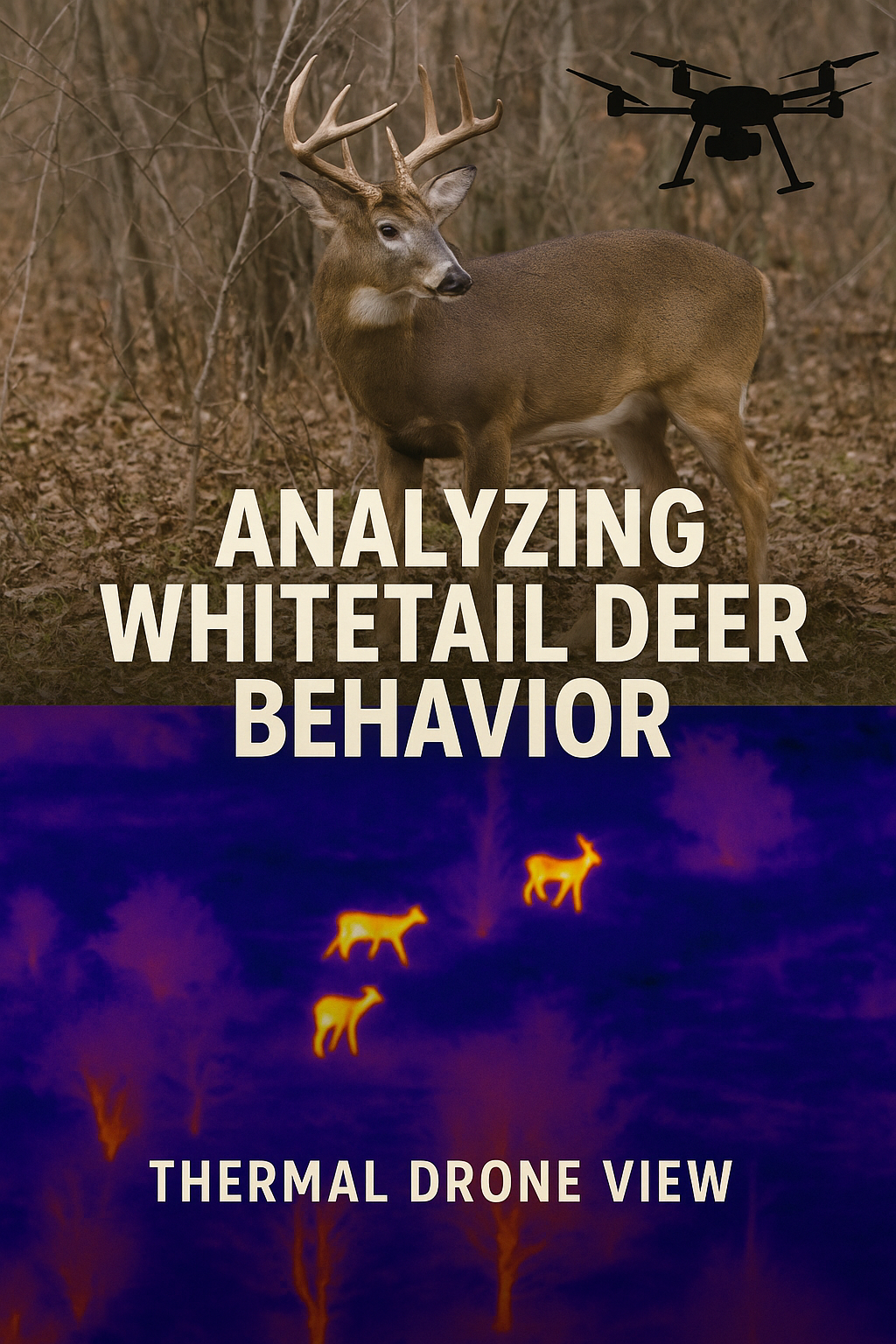A groundbreaking year-long study utilizing thermal drones has shed new light on the intricate world of whitetail deer. This in-depth research, spearheaded by Derrick of whitetailresearch.net, offers invaluable insights into deer behavior, thermal and wind patterns, and the often-overlooked advantages of morning hunting. Follow Derrick’s future research on Instagram.
Over the past nine months, Derrick has dedicated his time to an innovative and largely unexplored approach to whitetail deer research: the use of thermal drones. This cutting-edge method has provided a level of insight that traditional GPS collar studies simply can’t match. In this post, we’ll delve into Derrick’s fascinating findings and observations, aiming to enhance our understanding of deer behavior and refine hunting strategies.
The Purpose Behind the Pursuit
Many have wondered why Derrick chose to immerse himself in this research rather than spending every moment hunting. His answer is straightforward: the desire to gather robust data that could lead to a deeper, more factual understanding of deer behavior. While he did make the significant sacrifice of forgoing bowhunting last season, Derrick remained active in rifle hunting for doe management and assisted friends as a cameraman. His primary focus, however, was unequivocally on the research.
Unpacking Deer Behavior Through a Thermal Lens
Watching Mature Bucks Up Close
A significant portion of Derrick’s research involved meticulous observation of mature bucks and their bedding habits. Unlike the limited data provided by GPS collar studies, his thermal drone allowed him to watch deer in real-time. He could precisely track how many scrapes and rubs they interacted with throughout the day. This level of granular data collection is absolutely crucial for developing factual insights, moving beyond mere theories.
The Dynamics of Thermal Switches
One of the most captivating patterns Derrick observed was how mature bucks expertly utilize thermals to their advantage. Thermals are vertical air currents caused by temperature differences between the ground and the air. Understanding them is key:
- Rising Thermals: These occur in the morning as the sun heats the ground, causing warm air to rise and pull scent uphill.
- Falling Thermals: Conversely, these happen in the evening when the ground cools, causing cooler air to sink and pull scent downhill.
Derrick consistently noticed that within 5 to 10 minutes after the day’s high temperature, most mature bucks would stand up. This behavior was remarkably consistent, with the exception of the rut, when bucks would remain bedded longer if a doe was nearby. For example, on December 6th, four mature bucks under Derrick’s study stood up at 4:01 PM, precisely as the thermals began to switch. They moved swiftly down the ridge toward a food source, a clear demonstration of their keen awareness of thermal changes.
Navigating Wind Shifts
Another critical aspect of Derrick’s research was understanding the impact of wind shifts. While a steady wind is a valuable tool for hunters, midday wind shifts can significantly influence deer behavior. He focused on substantial shifts, such as a south wind changing to a north wind, often associated with incoming cold fronts. During one such event, Derrick recorded a mature buck’s precise reaction to the shifting winds. His movements were deliberate, and he strategically changed his bedding location based on the wind direction, which ultimately altered his evening behavior.
Morning Versus Evening Movement: A Clear Distinction
Derrick’s research also unveiled fascinating differences between morning and evening movements of mature bucks. He found that bucks tend to move more during daylight hours in the morning than in the evening. In terms of displacement (the total distance traveled from their starting point), bucks traveled significantly further in the morning, often on a mission and alone. In contrast, evening movements were typically more relaxed, and bucks were frequently surrounded by other deer. For instance, one buck Derrick tracked had a displacement of an impressive 1,232 yards in the morning versus only 272 yards in the evening.
Conclusion
Through this meticulous thermal drone research, Derrick from whitetailresearch.net has gained invaluable insights into the nuanced behavior of whitetail deer. His findings, particularly regarding their interaction with thermals, wind shifts, and time of day, can significantly enhance hunting strategies for Ohio hunters and beyond. As Derrick continues this groundbreaking research, we anticipate even more revelations about deer behavior and the factors that influence their movements.
If you found this information helpful, we encourage you to follow Derrick’s journey as he delves deeper into the fascinating world of whitetail deer research at whitetailresearch.net.

